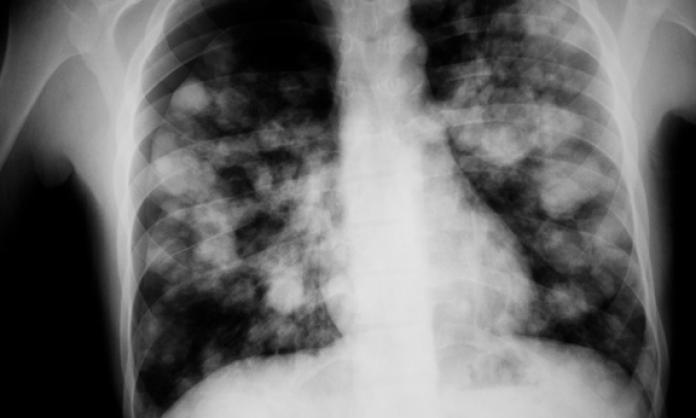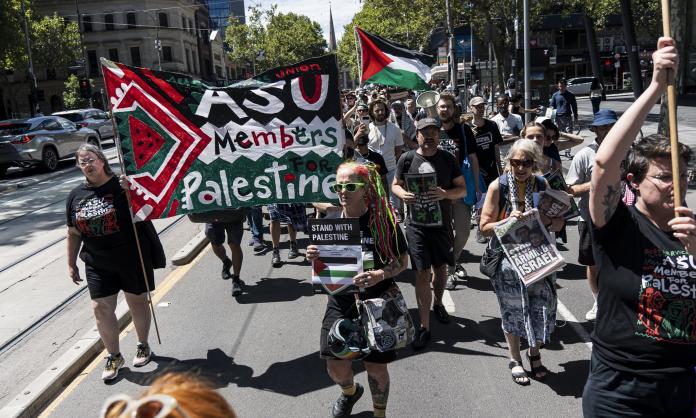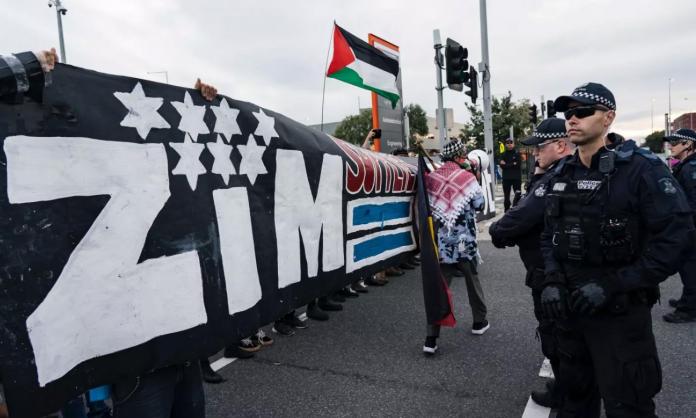Black lung, or coal workers’ pneumoconiosis, a respiratory disease prevalent in the 1880s and thought to have been eradicated in Queensland in the 1980s, has “re-emerged”. The government claims that 20 cases have been confirmed. Speaking to Red Flag, Stephen Smyth, president of the CFMEU Queensland Mining and Energy Division, said that the real number is more like 150, and that even this is the “tip of the iceberg”. Added to these figures is the increase in workers affected by coal mining-related diseases such as emphysema and chronic bronchitis.
Black lung is a disease that can show few symptoms for years after it takes hold. A hint might be a struggle to put shoes on or a coughing fit while mowing the lawn. There are potentially thousands who will discover they have the disease.
“At present we [the union] are only focusing on underground coal miners and some retirees … and there are 22,000 underground coal miners … If metalliferous miners are included, then there are potentially thousands more workers and their families affected”, Smyth said. “You can’t put a bandaid on it, it’s the complete and total breakdown of the system”.
What have the government and mine operators done since the scale of the disaster was exposed? According to Smyth, the response has been “piss poor”. There have been no buckets of money earmarked for better screening, or for more staff to analyse workers’ lung X-rays, or for inspectors to monitor levels of coal dust in mines. No hefty penalties have been levied on mine operators failing to comply with their obligations.
Instead, the Queensland government established an inquiry to look into the problem. The Coal Workers’ Pneumoconiosis Committee’s findings detail the callous disregard for workers’ lives displayed by government, health professionals and mine operators.
The committee found that the mines department hadn’t adequately monitored levels of coal dust in the mines, the health department didn’t consider black lung a major health concern, and many mine operators ignored the disease or shifted blame and regularly exceeded maximum dust levels.
Many workers were never screened for the disease. Thousands of others thought they were screened but are now discovering that their X-rays were of poor quality and impossible to read. Nothing was ever said. Others had their X-rays reviewed by medical professionals who weren’t trained to spot the disease.
The committee found that the health surveillance unit in the mines inspectorate, responsible for monitoring and screening for black lung, employed only one part time occupational physician. It was overwhelmed with records. Instead of engaging more staff to assess the X-rays, it piled them in a cleaner’s cupboard and shipping containers. They are now likely to be in no condition to be read.
A witness to the inquiry, US black lung expert Dr Robert Cohen, told the ABC that he did not believe the disease had ever gone away. “You’re mining significant quantities of coal in Queensland and not to have one single case, it sort of begs the imagination”. The inquiry heard that black lung had not “re-emerged”; it was just that now the health authorities had been forced to look for it again.
The committee’s findings repeat the conclusions of a review the government was forced to commission hastily in 2016, when black lung cases started to appear again. Jointly conducted by occupational health specialists from Monash University and the University of Illinois, the review found “major system failures at virtually all levels of the design and operation of the respiratory component of the current health assessment scheme”.
It’s been reported that dust levels still remain well above the legal limit in many Queensland mines, while companies wring their hands about the tragedy facing their workforces. “It’s just lip service”, Smyth says. “They’re hoping the issue will just go away.”
The union is demanding the introduction of a range of measures, including the adoption of international standards for screening, independent screening services and a reduction in maximum dust limits. Crucially, it wants a levy of 10 cents per tonne of coal introduced so that mining companies will pay the cost of the new measures, and to compensate affected workers and their families when they die. The companies, which are raking in profits to the tune of $35 million per week, are baulking at the levy. A spokesperson for BHP told the Australian Financial Review that the company “does not believe a levy is required”.
Former coal miner Steve Mellor found out last year that he has black lung. He told the ABC, “This shouldn’t be like this. Men are dying just because we went to work; that’s all we did, we went to work and now we’re going to die from it”.
Workers like Steve and their families, with the union, are getting involved and fighting back. For decades now, without a care for their safety, mining bosses have sent workers into dangerous dusty mines to dig out mega-profits. It’s when workers threaten the flow of these profits that the bosses and the government will sit up and take notice.











